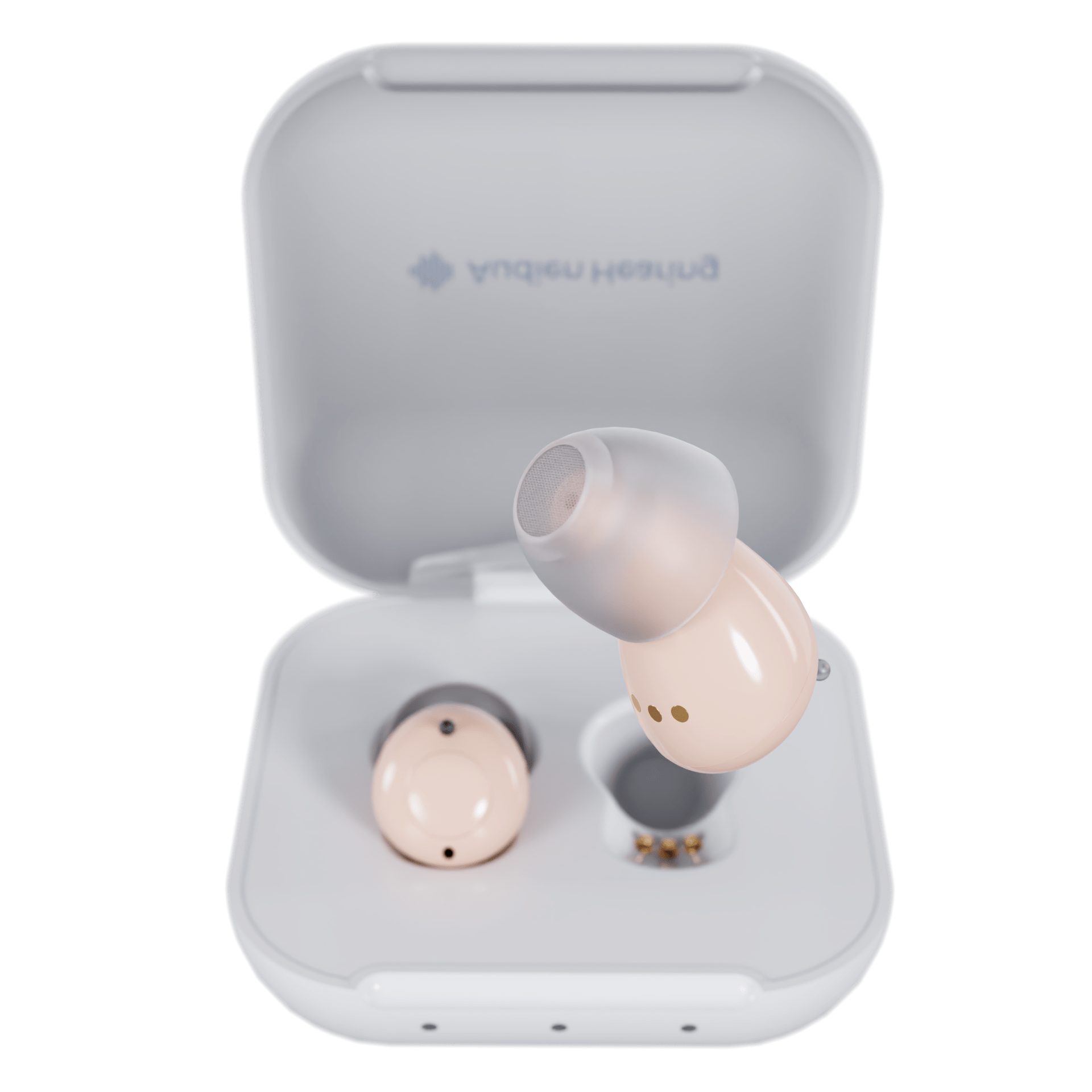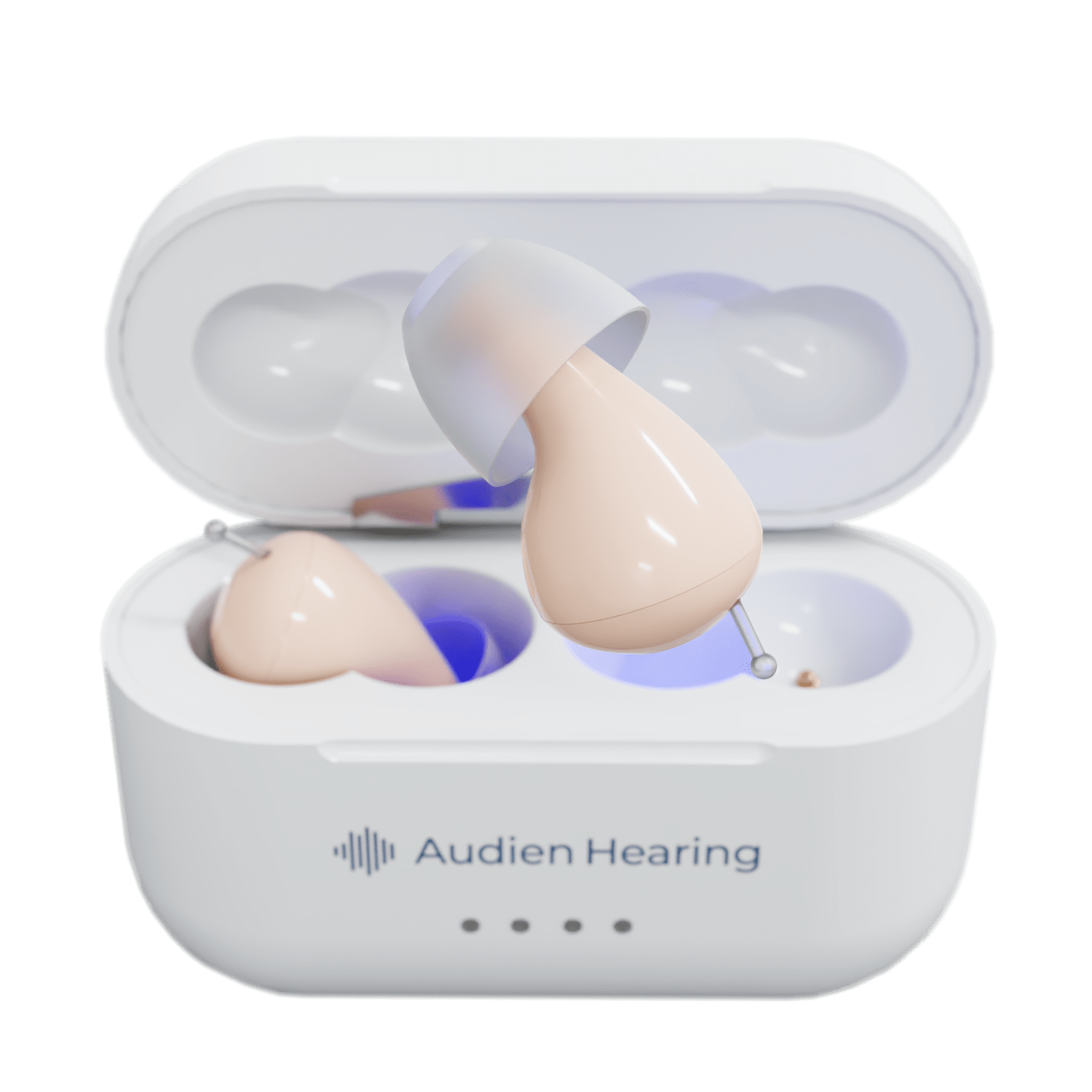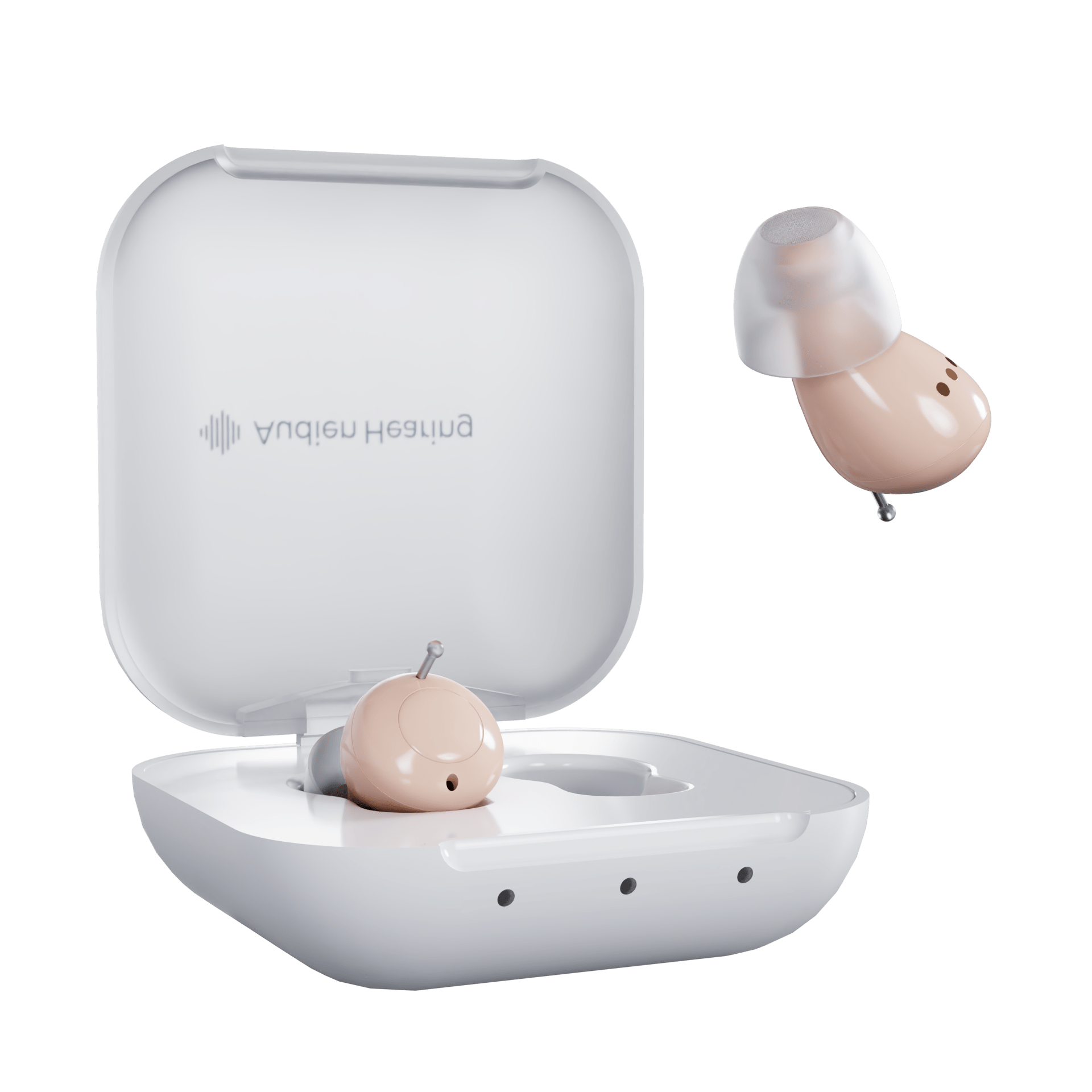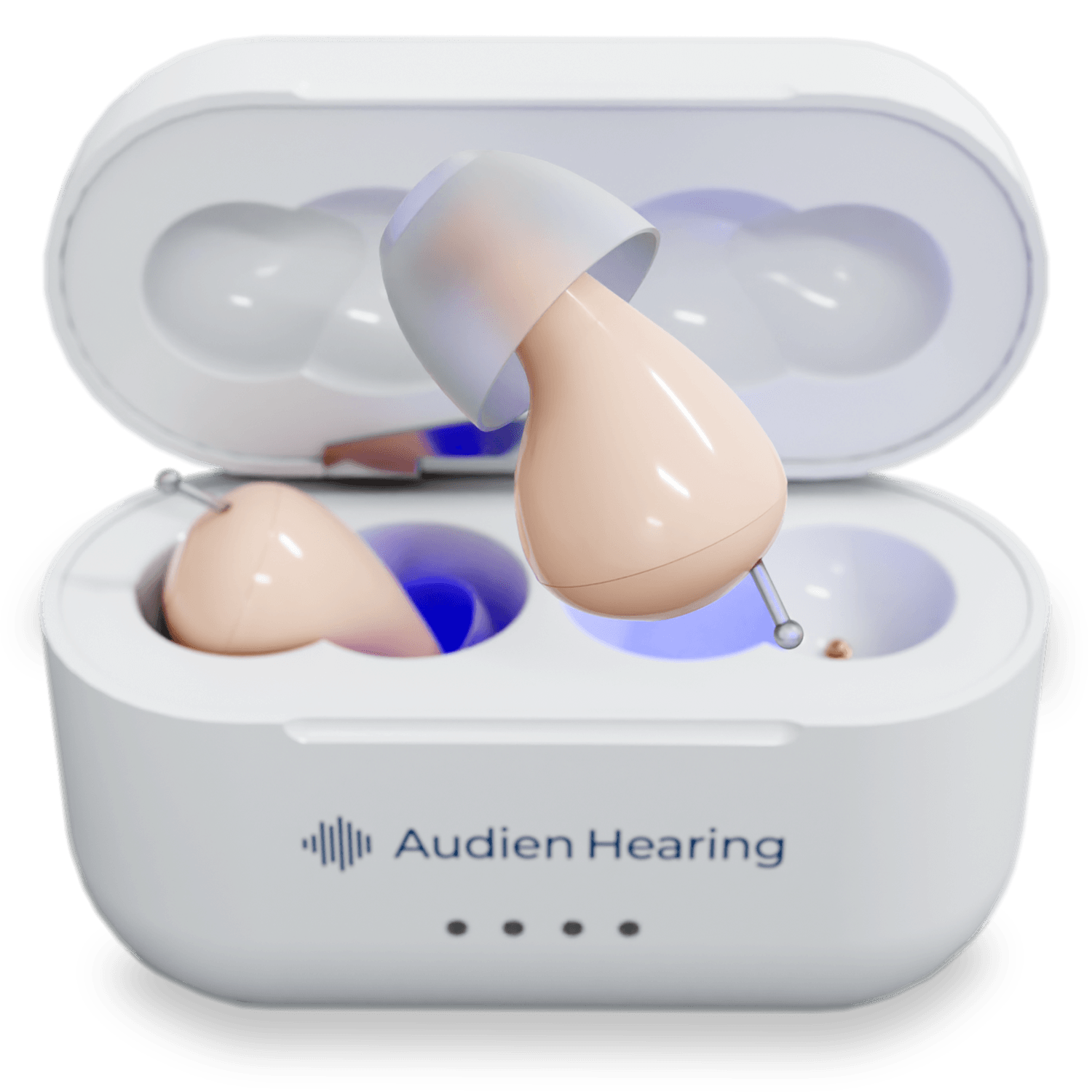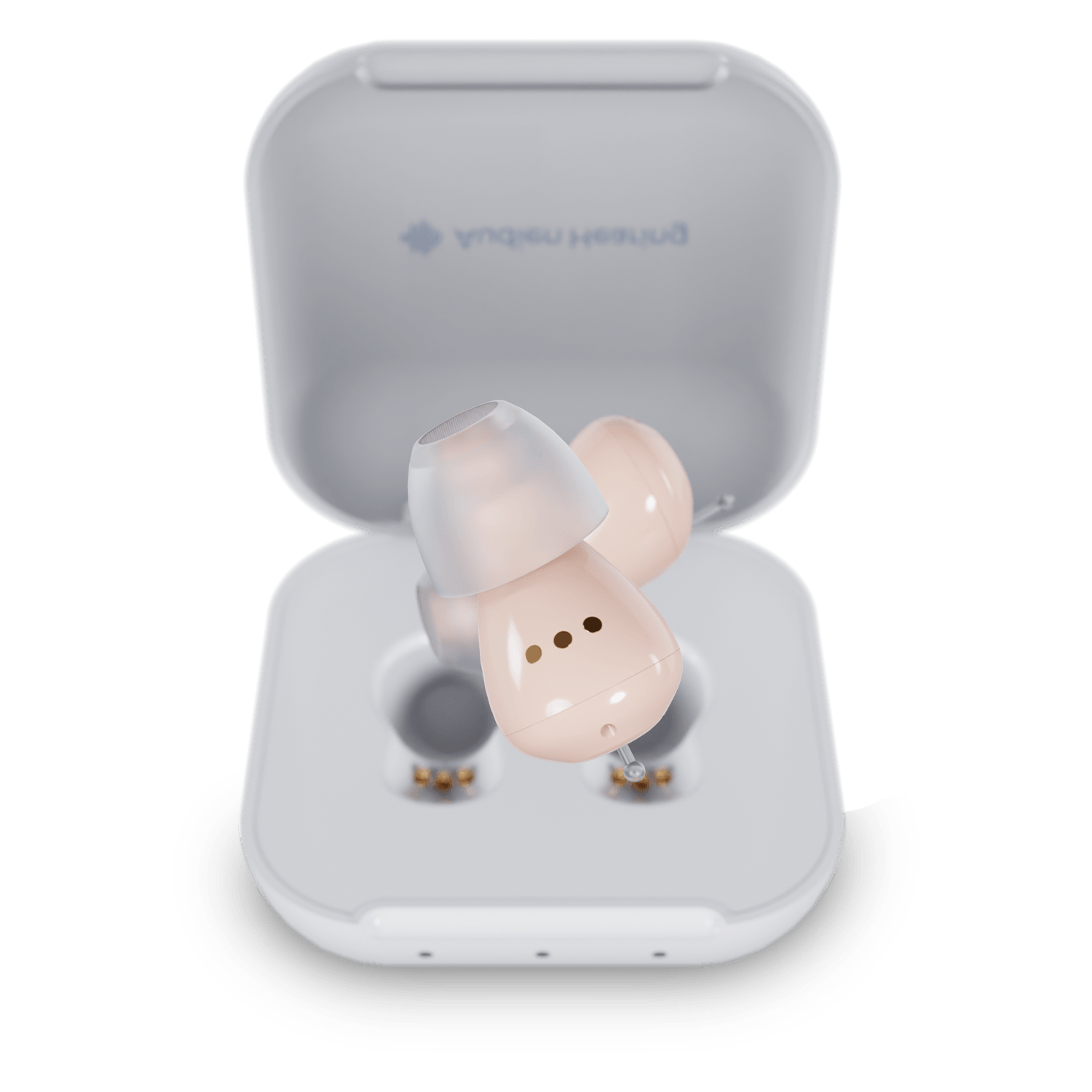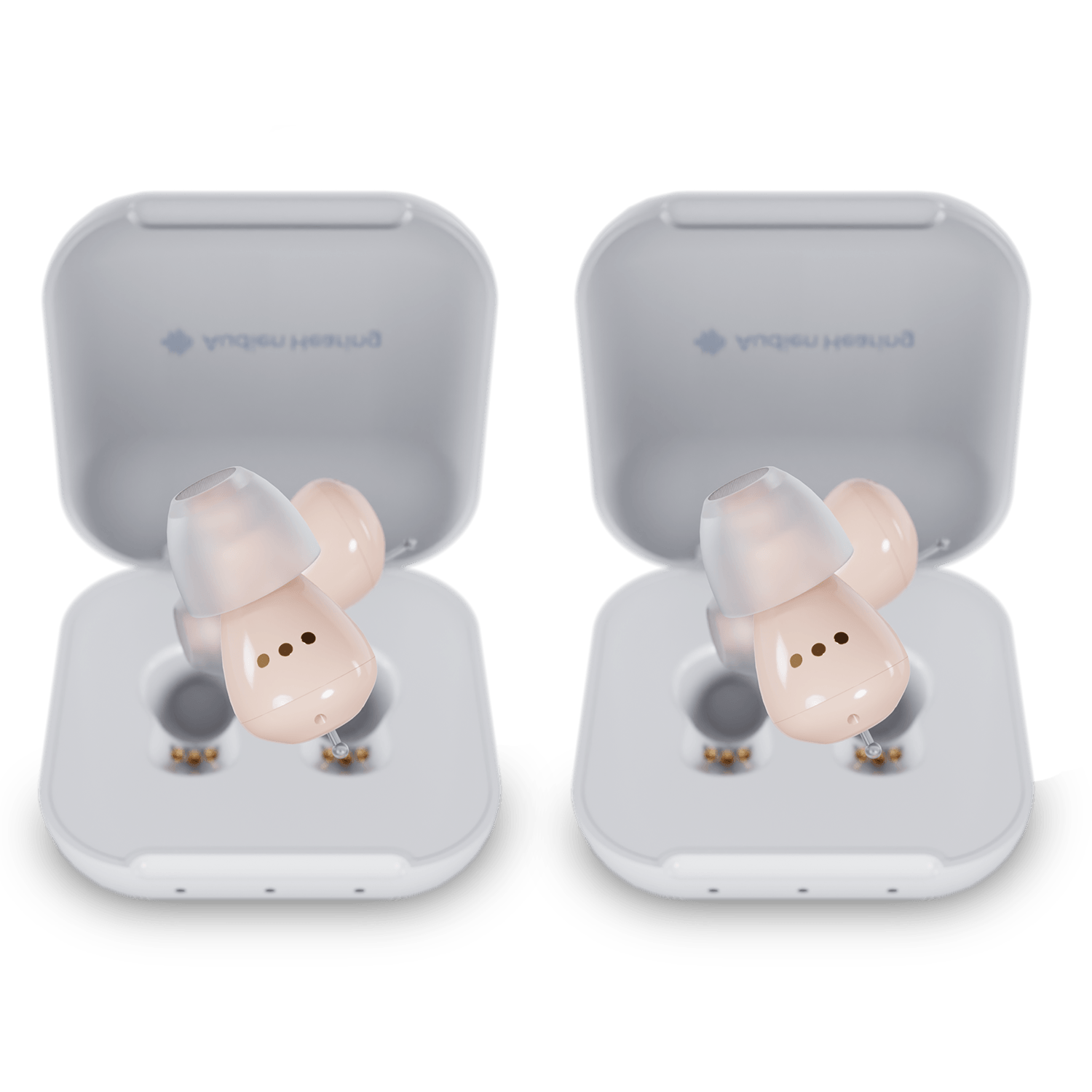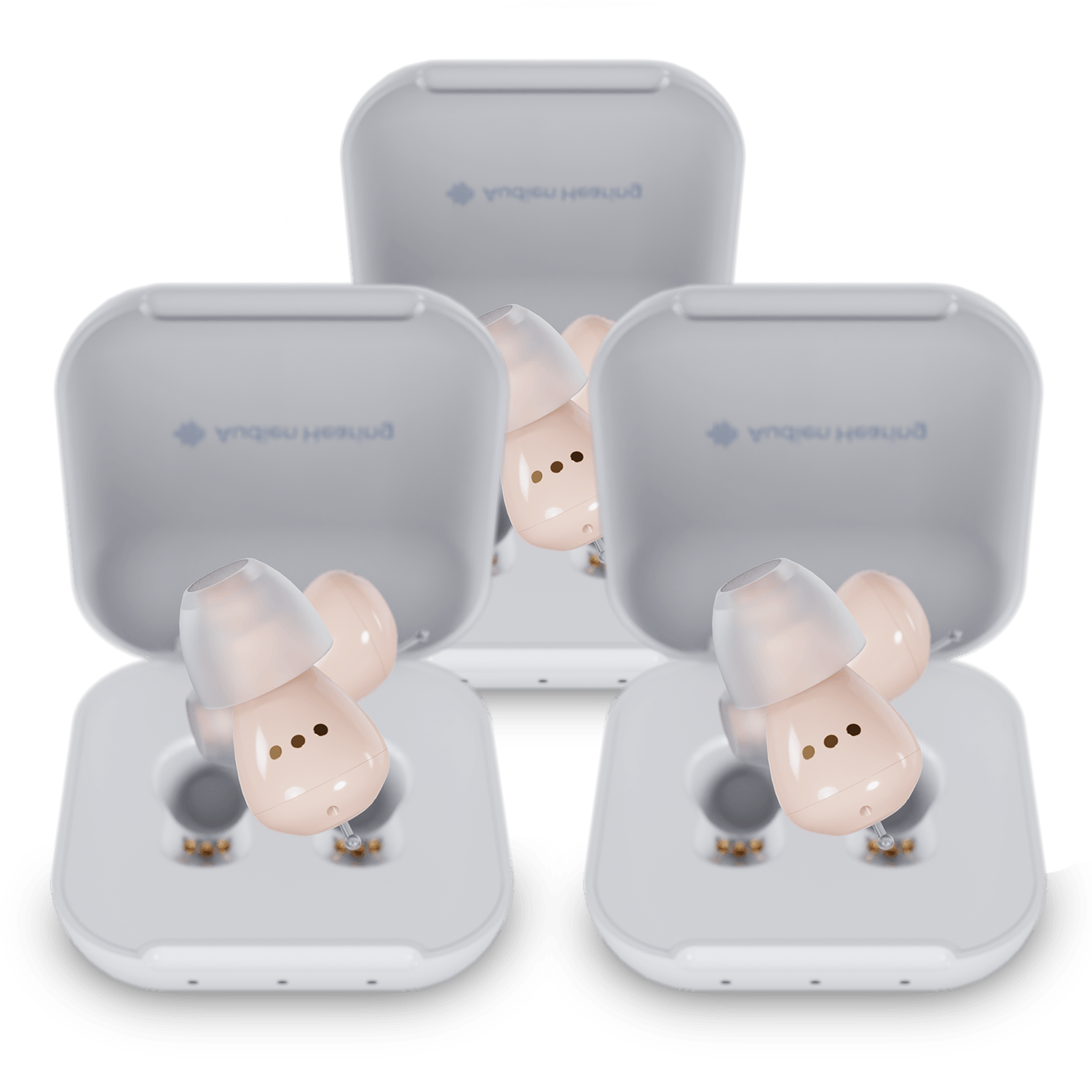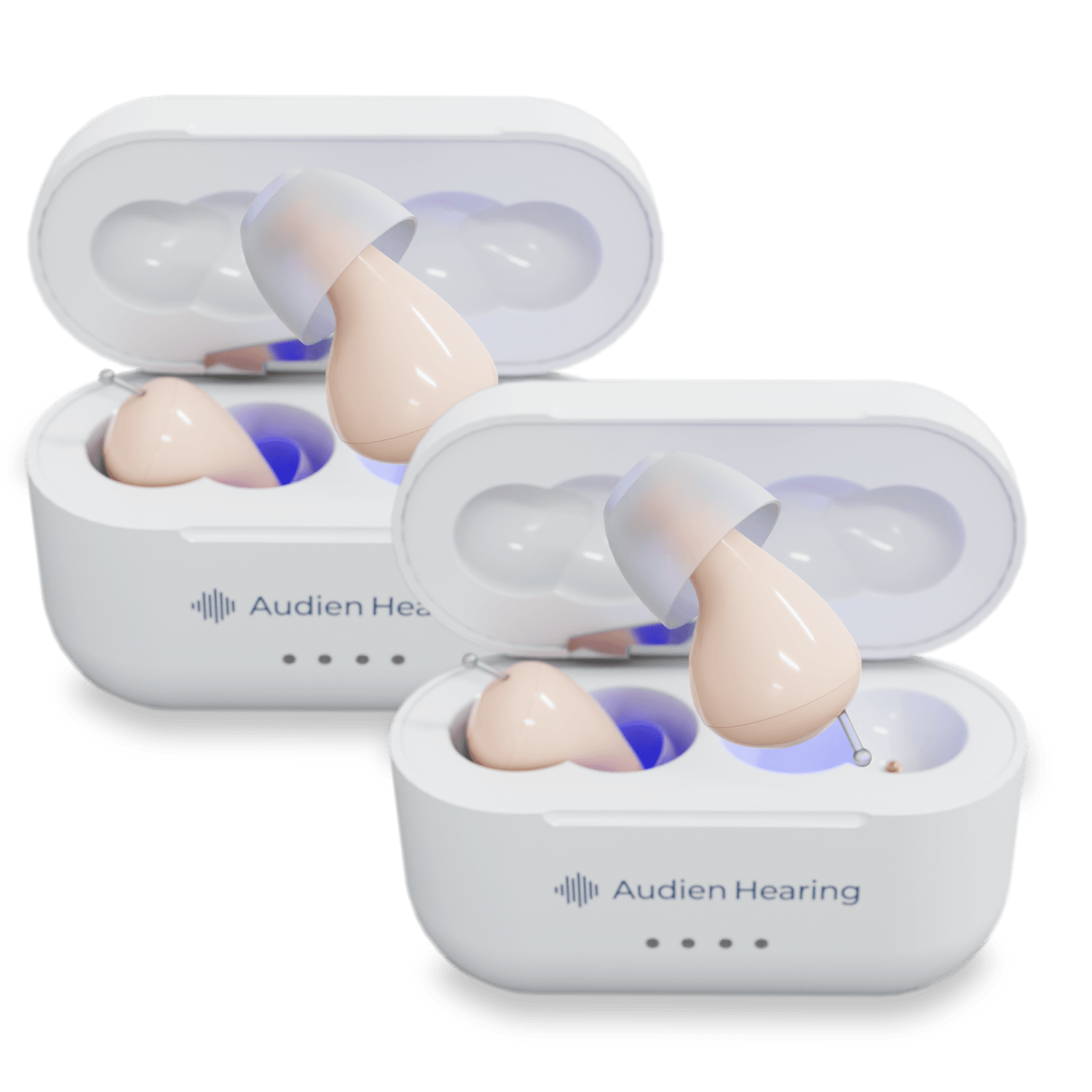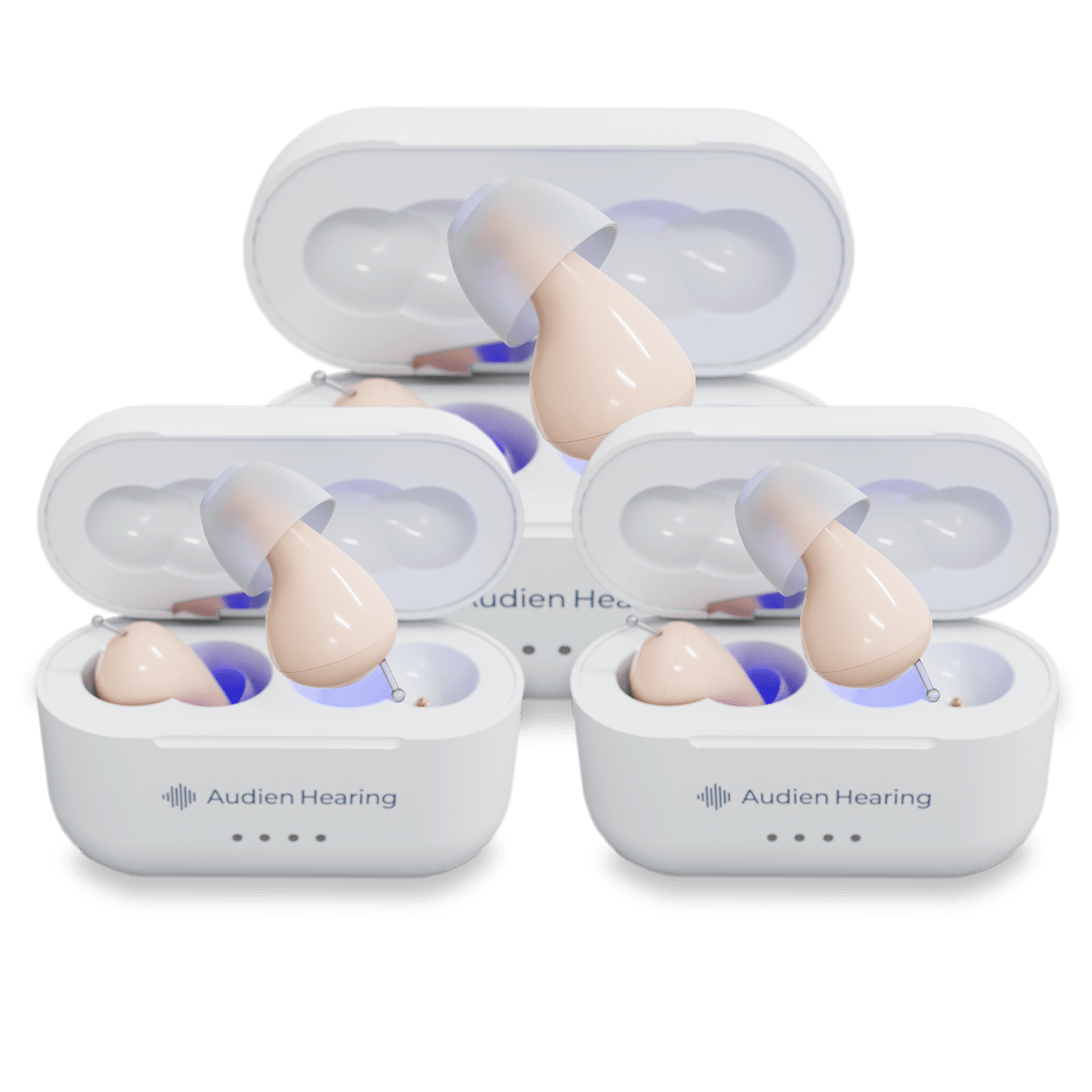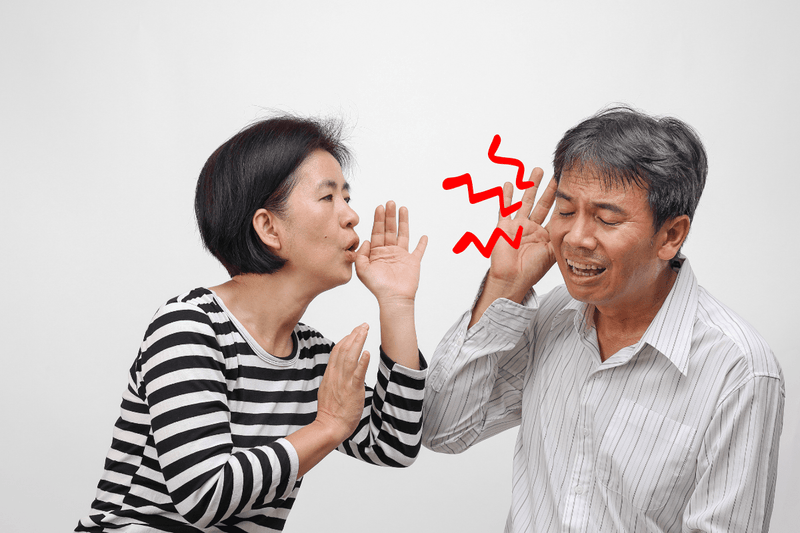"Can I just get one hearing aid?"
It's one of the most common questions I hear in my practice, usually followed by "My left ear is fine" or "It would save me money." The answer isn't as straightforward as you might think.
As an audiologist, I've seen how this decision impacts not just hearing, but safety, relationships, and quality of life. Let me help you understand what's really at stake when choosing between one or two hearing aids.

Understanding Single-Sided Hearing Loss
True single-sided hearing loss (SSD), also called unilateral hearing loss, means you have normal hearing in one ear and reduced hearing in the other. This differs from asymmetrical hearing loss, where both ears are affected but to different degrees.
Here's what many people don't realize: even if only one ear has hearing loss, the impact on your daily life can be significant. Your brain relies on input from both ears to:
-
Locate where sounds come from
-
Understand speech in noise
-
Create a full "sound picture" of your environment
-
Reduce listening effort
When one ear isn't pulling its weight, your entire auditory system has to work harder, like trying to see a 3D movie with one eye closed.
How Do You Know If It's Really Just One Ear?
Many patients come to me convinced they have hearing loss in just one ear, but testing often reveals both ears are affected. Here's why this confusion happens:
The better ear compensates. If your right ear has mild loss and your left has moderate loss, you might think your right ear is "normal" because it's doing most of the work.
Gradual changes go unnoticed. When hearing loss develops slowly over years, you adapt without realizing it. Your "good" ear might not be as good as you think.
Phone preferences reveal differences. Do you always switch the phone to the same ear? That's often the first clue about asymmetrical hearing.
Professional testing is essential. Only a proper hearing evaluation can determine whether you have true single-sided hearing loss or asymmetrical loss in both ears. Many people are surprised by their test results.
The Hidden Challenges of Single-Sided Hearing Loss
People often underestimate how much single-sided hearing loss affects daily life. Here are the challenges that surprise my patients:
The "head shadow" effect. High-frequency sounds (like consonants in speech) don't travel well around your head. If someone speaks to your bad ear, you might hear their voice but not understand the words. It's like listening to a muffled radio station.
Exhausting social situations. Constantly positioning yourself so your good ear faces the speaker is mentally and physically tiring. Many people develop neck pain from always turning their head. Restaurant seating becomes strategic rather than social. You might find yourself always choosing the same seat, no longer sitting beside loved ones but across from them.
Missing important sounds. You might not hear:
-
Someone calling from your affected side
-
A car approaching from that direction
-
Your alarm clock if you sleep on your good ear
-
Warning signals at work or in public
Difficulty in noise. Restaurants, parties, and meetings become especially challenging. Your brain can't use binaural processing to separate speech from background noise. It's like trying to focus on one conversation at a cocktail party with earplugs in one ear.
When One Hearing Aid Makes Sense
There are legitimate situations where using a single hearing aid is appropriate:
True single-sided deafness with one completely non-functional ear. Traditional hearing aids can't help an ear with no residual hearing.
Medical contraindications in one ear, such as chronic drainage, absent ear canal, or certain medical conditions that prevent hearing aid use.
Temporary conductive hearing loss in one ear. If fluid or infection will resolve, a single hearing aid for the other ear might be a short-term solution.
Note: While some people ask about buying just one hearing aid for financial reasons, Audien hearing aids are sold as pairs to ensure optimal hearing support when both ears need assistance.
Why Two Hearing Aids Are Usually Better
When both ears have aidable hearing loss, wearing two hearing aids provides dramatic advantages:
Better speech understanding in noise. Studies show binaural hearing aids improve speech recognition by up to 40% in noisy environments. That's the difference between nodding along and actually participating in conversations.
Improved sound localization. You'll know where sounds come from, improving safety and awareness. This isn't just convenience; it's about hearing that car honking or knowing which grandchild is calling you.
Reduced listening effort. Your brain doesn't have to work as hard, reducing the exhaustion that comes from straining to hear all day. Imagine ending your day with energy instead of a headache.
Better sound quality. Music sounds fuller, conversations feel more natural, and the world sounds three-dimensional again. The difference is like going from AM radio to surround sound.
Preventing auditory deprivation. An unaided ear with hearing loss can lose speech understanding over time from lack of stimulation. Use it or lose it applies to hearing too.
Lower volume settings needed. Two hearing aids working together require less amplification than one trying to compensate for both ears. This means more comfortable listening and less feedback.
The Real Cost of Choosing Just One
Let me paint a picture of what choosing one hearing aid when you need two really means:
In restaurants: You'll still struggle because your brain can't separate speech from noise effectively with just one aided ear. Date nights remain stressful instead of romantic.
At family gatherings: You'll miss conversations happening on your unaided side and constantly ask people to repeat themselves. Half the room becomes a dead zone.
For safety: You won't reliably locate sounds, potentially missing warnings or approaching vehicles. That motorcycle coming up on your left? You might not hear it.
At work: Meeting participation remains challenging, especially in conference rooms where people sit all around you. Career advancement suffers when you can't fully engage.
Long-term: Your unaided ear continues deteriorating, potentially making future treatment less effective. You're gambling with your future hearing.
Special Solutions for Single-Sided Deafness
If you truly have one deaf ear and one normal ear, traditional hearing aids won't help the deaf ear. However, special solutions exist:
CROS hearing aids pick up sound from the deaf side and transmit it to the good ear. This helps with the head shadow effect and improves awareness.
BiCROS systems work similarly but also amplify sound for the better ear if it has some hearing loss too.
These systems help with awareness but don't restore true directional hearing. They're a compromise solution for a specific problem.
Making the Financial Decision
I understand the cost concern. Traditional hearing aids at $4,000-$7,000 per pair make people look for ways to cut costs. But consider this:
With Audien's pricing for complete pairs:
-
Atom One: $98/pair
-
Atom 2: $189/pair
-
Atom Pro 2: $289/pair
-
Ion: $489/pair
-
Ion Pro: $689/pair
These affordable prices for pairs mean you don't have to compromise.
You get the full benefit of binaural hearing: 40% better speech understanding in noise, safety from directional awareness, and reduced listening fatigue. The investment in proper hearing is less than many monthly expenses we don't think twice about.
The Science of Binaural Hearing
Your brain is designed to process sound from two ears. This binaural processing allows you to:
Filter noise naturally. Two ears help your brain focus on what you want to hear while filtering out background noise.
Locate sounds instantly. The tiny time difference between when sound reaches each ear tells your brain exactly where it originated.
Hear with less effort. Like using both eyes reduces eye strain, using both ears reduces listening fatigue.
Maintain spatial awareness. You exist in a 360-degree sound environment. One hearing aid only gives you 180 degrees.
Real-World Scenarios: One vs. Two
Let me show you the practical difference:
Scenario: Driving
-
One aid: You might not hear emergency vehicles approaching from your unaided side
-
Two aids: Full awareness of your sound environment for safer driving
Scenario: Restaurant dinner
-
One aid: Still struggling because you can't separate speech from noise
-
Two aids: 40% better speech understanding, actually enjoying conversation
Scenario: Walking in the city
-
One aid: Missing important sounds from one side, reduced safety
-
Two aids: Full environmental awareness, confident navigation
Scenario: Family gathering
-
One aid: Constantly repositioning to hear, missing side conversations
-
Two aids: Natural participation from any seat at the table
The Professional Perspective
After years of fitting hearing aids, here's what I've observed:
Patients who need two hearing aids but try to manage with one almost always struggle with the limitations. They quickly realize that partial hearing improvement isn't enough for real-world situations.
Those who get two hearing aids when they need them adapt faster, report higher satisfaction, and engage more fully in life. The difference is dramatic and consistent.
With Audien's affordable pricing for pairs and 45-day trial, you can experience complete hearing improvement risk-free. The advanced features like the Ion Pro's six hearing profiles or the Atom Pro 2's background noise cancellation work best when both ears are aided.
Making Your Decision
Ask yourself these questions:
-
Has professional testing confirmed I have hearing loss in only one ear?
-
Do I struggle in noisy environments?
-
Is directional hearing important for my safety and lifestyle?
-
Am I willing to accept the limitations of monaural hearing?
If you have hearing loss in both ears, even if one is worse than the other, two hearing aids will serve you better than one. The brain needs input from both ears to function optimally.
The Bottom Line
"One ear or both?" isn't really about your ears—it's about your brain. Your auditory system is designed to work with two inputs. When both ears have hearing loss, providing only one with help is like wearing a monocle instead of glasses—you'll see better than without it, but you're still missing half the picture.
With Audien's revolutionary pricing starting at just $98 for a pair, the financial barrier to binaural hearing has essentially disappeared. Whether you choose the discrete Atom series or the powerful Ion series with features like Bluetooth streaming and multiple hearing profiles, you're getting complete hearing support.
Don't compromise your hearing, safety, and quality of life. Your brain, your relationships, and your future self will thank you for choosing complete hearing over partial solutions.
Take advantage of Audien's 45-day money-back guarantee to experience the full benefit of properly aided hearing in your real life. Because when it comes to hearing, two isn't just twice as good as one—it's exponentially better. And with Audien's affordable pairs, better hearing is within reach for everyone who needs it.
